Learning a good climbing technique and constantly improving it is the cornerstone of good climbing and bouldering. Having good climbing technique means efficiently mastering the corresponding climbing situations and thus saving maximum strength and endurance. But how can the correct climbing technique be trained? Christoph Völker from Target 10a gives tips in this post.
A guest contribution by Christoph Völker from target10a
The problem here, however, is the question of how specific technique training, especially in climbing and bouldering, could look like! If you undertake to explicitly train the climbing technique in a training session, then it will simply not work with many approaches.
An example would be you want to concentrate on a certain technique, like turning, but most of the time you will come across too many climbing situations where this technique is simply not required.
Or you start a route with the aim of using good technique. If this route is already close to your performance limit, that will hardly work either - good technique runs in the subconscious. If you now consciously concentrate on special techniques at your performance limit, you will slow down and the trains will also become unnatural or even cramped. In the end, you fail more easily and it also felt technically worse than if you had just started climbing!
Another problem has more to do with the medium here and that is presenting and solving problems with specially used climbing techniques here using series of images, videos and text. For example, when I film a boulder in any bouldering hall and then explain why a certain technique is particularly helpful at this point.
The problem with such videos is that people whose climbing technique and experience are not that high, simply cannot imagine what the climbing situation really feels like for the body. If they could do that, then their technology would also be at a higher level.
For such people it would make sense individually and on site to look at a problem together with a better climber or couch and work on a good solution. In this post I don't want to explain and introduce you to individual climbing techniques, but rather, aimed at beginners, I want to show you some general tips and mistakes, sometimes mistakes that are often made, with regard to technique training!
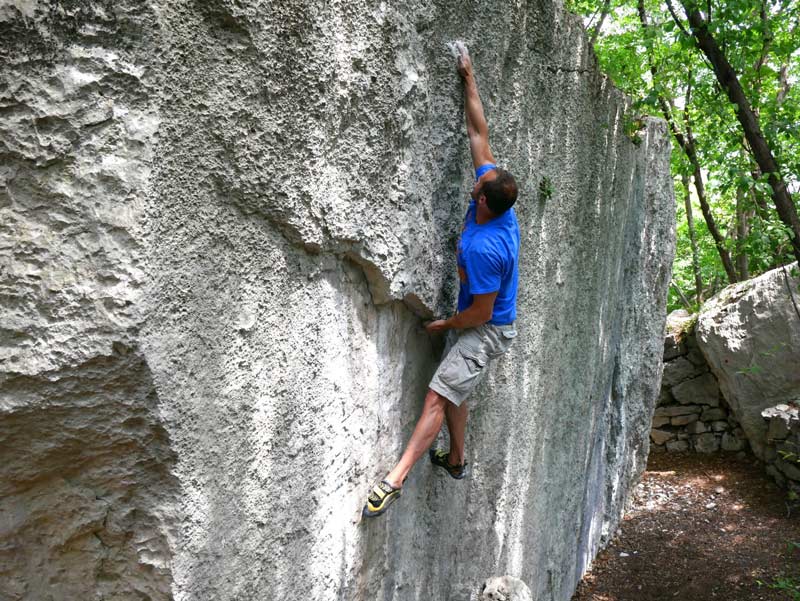
1. Feel, analyze, deal mentally with the route or the boulder.
For climbing technique, it is of great importance that you can mentally save the moves, holds, steps, i.e. all details, and then rewind them again and again in your mind's eye! These details also include how a step and grip feels and how your body felt when you were pulled!
If you recapitulate these details over and over and also start to imagine how to climb a new situation based on the holds and kicks that you can see, this will simply keep increasing the amount of movement information in your head to improve your technique!
Over time, this process takes place more and more in the subconscious. But use your climbing breaks, which make up a large part of your training unit in terms of time. Because with a two-hour bouldering unit, you may actually only be bouldering for 20 minutes! If you only talk about the rest of the time, or think about God and the world, then your learning process in terms of climbing technique will simply be suboptimal.
So during the breaks, think about how this or that train felt, what could be improved, or which trains could be used to climb a new route.
Even if you fail at a difficult point: Think about an alternative move and try to imagine what it feels like right away. Then you try to climb the place with the new idea and pay attention to how your idea of it corresponds with reality. The closer and more often you bring ideas and reality together, the better your climbing technique will be!
The above applies not only to the supposedly positive pull variants, with which you are optimistic that you can actually solve the bouldering problem, but you can also try negative pull variants every now and then and see whether they really don't work. So according to the motto, this way and that, this train can't actually work at all. Then try it out and either you are right and you can be happy that your idea also corresponds well with reality here! Or there is a solution to the problem with this comical variant, which then really benefits your movement horizon!
But that's exactly how you should watch other climbers with their solutions or their failure. Especially climbers who are better than you. Every now and then you can listen to these climbers talking and discussing a route. Take a look at how they tinker with a certain problem and systematically work out a joint solution!
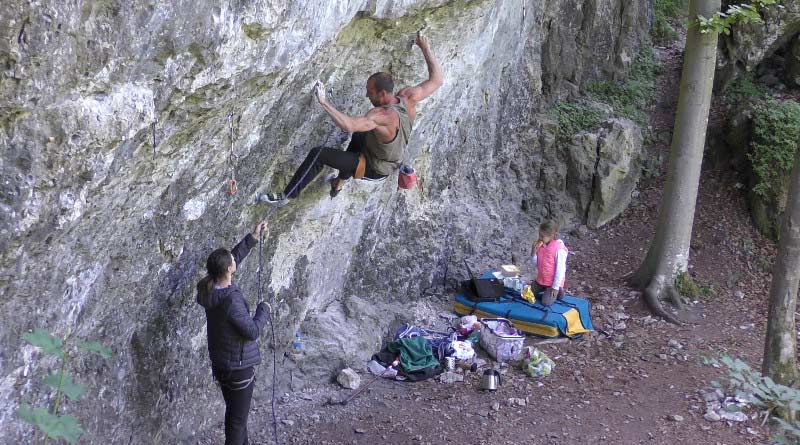
2. Go bouldering with other people
Let's get to the next point and that means climbing and above all bouldering together with other people! In this way you can work out a solution together with climbers of the same strength or slightly better, discuss the problems with them and also look at other people's attempts and ultimately the solutions!
Ideally, you will always have slightly better people with you to learn from. It would also be helpful to connect with new people every now and then, because you will be shown new input and different approaches through the different strengths, weaknesses, experiences and even attitudes. For example, a climber with a completely different height or weight will sometimes be able to show you a much more efficient solution.
But you can also find out more easily where your strengths and weaknesses are in comparison with other people! If you basically all climb the same level of difficulty in your group, but you always find it harder than the others in a special type of climbing, then you have probably found a weak point here!
If, for example, you find that you don't really find the right balance and load dosage on small steps, then you should climb more routes of this kind in the future. They can also be a bit easier than your normal level of difficulty, for example one color lower in the bouldering hall.

3. Variety in your routes and boulders
The variety that is good for you with your climbing colleagues also applies to the type of climbing you do. So you should always ensure variety in terms of grip shapes, inclination, character but also in terms of the length of the routes and boulders.
The problem for many is that they only like to do what they are good at - in terms of climbing that means mostly only doing the type of climbing that suits you and avoiding routes that are difficult for you, although they should actually fit in terms of the difficulty rating.
For example, people may avoid steep and athletic climbing, while others avoid technical plate climbing, and still others don't like dynamos. The worst cases have two or more such dislikes. It can also refer to grip shapes, so that some avoid routes with sloper grips, for example, others don't like pliers and still others don't like scratchy ridges.
But now it may be that there is a route in your favorite area in which one place is completely different. For example, you don't actually like steep routes. But a great vertical route may also have a steep boulder entry. Or a sloper is also involved in a predominantly groin climbing.
Even if this point already applies to the more advanced: The variety of areas or bouldering and climbing halls is also important. So if you have the opportunity, change the hall as often as possible, because with different route builders and also wall structures and handles you will encounter new challenges! Of course, this also applies to the areas outside, if you are also out and about! Due to the different types of rock, there are different inclines and different grip structures, which often require completely different climbing and technique!
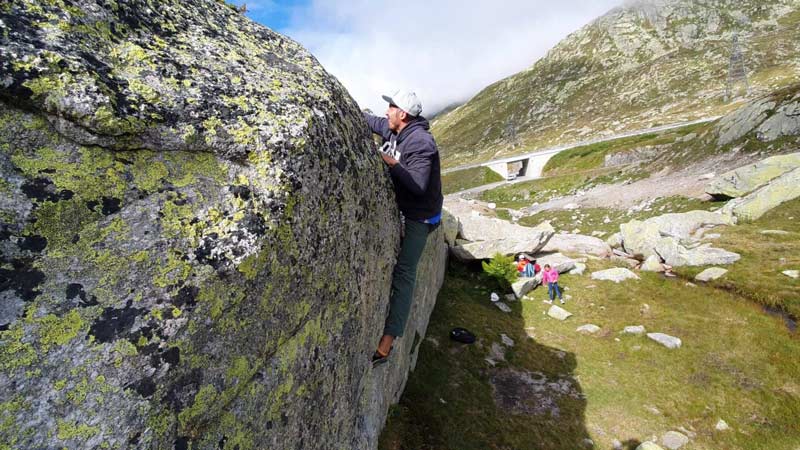
4. Technique drills
So we come to the next point, namely the problem with technique drills in climbing training. In climbing, it is difficult to perform certain techniques, such as turning in, drop knee, etc. as technique drills, as works well in tennis or other sports. In tennis, for example, you can hit forehand 30 times, backhand 30 times and then serve 30 times.
In climbing, such technique exercises or drills are difficult because the routes and boulders are too different and it is therefore practically impossible to say that today I am training explicitly turning, or shoulder pulls or another technique.
If you try that, you will always come across completely different climbing situations, especially in unknown routes, that simply do not require the desired technique!
So how can we still do some kind of technique drills like in tennis? There are two good ways to do this:
1. When warming up - While we are warming up with easy tours and boulders, we climb well below our performance limit and therefore have the opportunity to concentrate entirely on certain "clean techniques", such as stepping cleanly, stepping high, climbing on the long arm, or play with the center of gravity in order to climb a place particularly efficiently and effortlessly. But also try to bring in a bit of dynamism in static trains in order to save energy and to be on the road faster.
2. When repeating harder routes that have been completed: Repeating tours and boulders is one thing that, according to my observation, many climbers do not do, especially repeating just below the performance limit offers the possibility of new and difficult moves in the memory and to grind in the body and also to optimize it. You will probably climb the entire route more efficiently on the first repetition than on the first ascent. With each further repetition, this effect naturally subsides.
The repetition should be done promptly, preferably in the same training session or a week later at the latest. If you notice that one repetition does not bring you any new aspects and it already feels too common, then further repetitions hardly make sense!
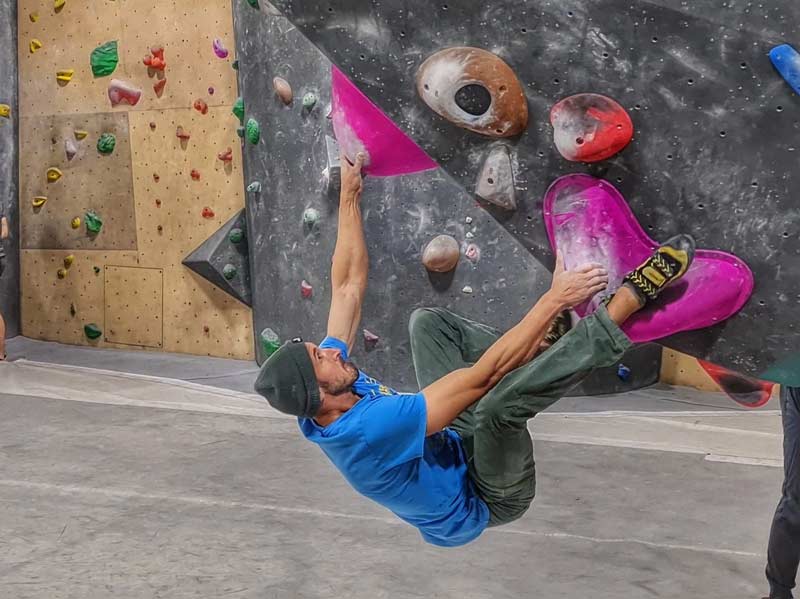
5. Bouldering out
Perhaps the best and most important technique training is bouldering out difficult individual areas just below your performance limit! This can be a question of individual rope climbing spots or short, difficult boulders per se, also in the hall.
The important thing is the selection of the boulders, which, as already mentioned, should be just below your performance limit. This means that you can't climb a boulder like this straight away, but that you need five attempts or more to solve the problem.
In the first approach, you should by no means choose more force as a solution, so you should not just try to slam the handles more tightly, but only use it as a last resort.
First, however, you should play with all possible variants in order to crack the problem with the best possible technique! This can have many different aspects: You can try different order of grips, use different kicks, but also just play with different foot positions and balance on one step. Sometimes you also have to pull a grip that you first took frontally towards your body rather than a side grip, or vice versa, shoulder away from your body and outwards.
Always pay attention to which elements already feel good and right and which are not yet. So you can work out the best solution with systematic trials.
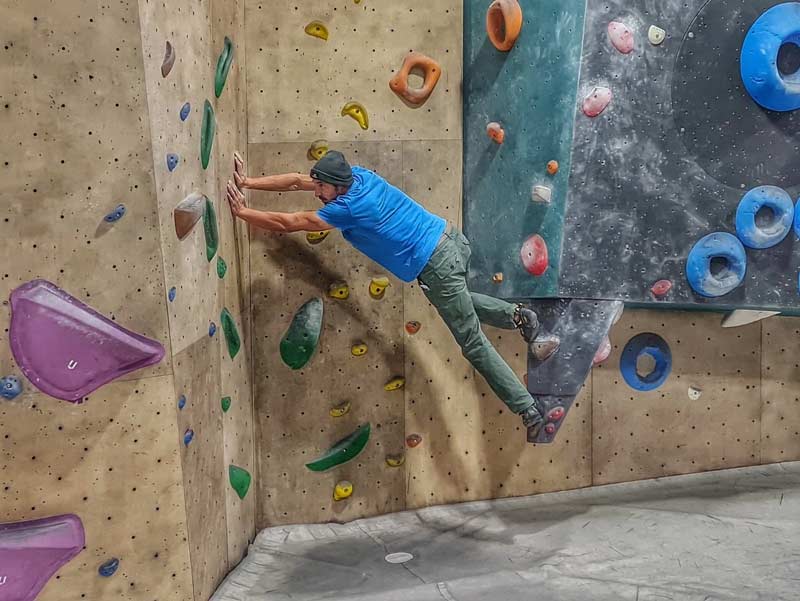
Finding the best solution is only the most obvious benefit that bouldering offers you. The other is that you gain so much individual information about movements, kicks, grips, etc. with just one boulder problem, which means for the future that you know more about what works well or less well in certain situations!
On the other hand, if you only boulder or climb things that you can do immediately or at least very quickly, then you will mostly only make your standard movements and moves that you have already saved in your head! Especially in climbing routes, most of the moves are such that you have already done them in a very similar form and there is then little scope for really new things.
So use bouldering on problems that do not overwhelm you, but still challenge you, in order to improve your climbing technique with all the countless unsuccessful attempts!
Internalize these five aspects for your climbing training and you will quickly take your technique to a new level!
You want to know more about the training?
Other Training tips can be found here.
You lack the necessary equipment for training?
You can find articles for your personal training www.target10a.com
Do you like our climbing magazine? When we launched LACRUX, we decided not to introduce a payment barrier. It will stay that way, because we want to provide as many like-minded people with news from the climbing scene.
In order to be more independent of advertising revenue in the future and to provide you with even more and better content, we need your support.
Therefore: Help and support our magazine with a small contribution. Naturally you benefit multiple times. How? You will find out here..
+ + +
Credits: text Christoph Völker from target10a

